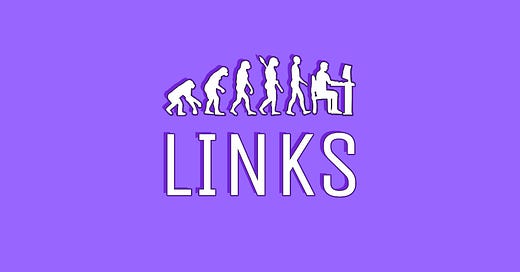LINKS - March 2nd, 2022
Welcome to LINKS — my attempt to provide Rhapsody readers with five interesting stories that tell us something about what it means to be human. LINKS is published every Wednesday. Have a link you want to share? Drop it in the comments.
Isaiah Lorado Wilner on the Influence of Indigenous Knowledge on Modern Thought
By Nuala P. Caomhánach, Journal of the History of Ideas Blog
“We are commonly taught that modernity flows in one direction, from the West to ‘the rest.’ The history that I’ve traced in this essay reveals the flow of knowledge in the opposite direction, from nonstate people to the state. The evidence I present is the work of the Kwak’wala-speaking peoples to civilize the man who came to study them, converting Franz Boas to the principles of potlatch, which led Boas directly to the transformational insights with which he is associated today. The deconstruction of race and the rise of the modern concept of culture—major steps toward decolonial thinking—resulted from the influence of Indigenous thinkers, specifically the Kwakwa̱ka̱’wakw, who inculcated Boas in a system of knowledge enacted by means of dance.”
Metal’s Circle Dance
By Ryan Christopher Jones, Anthropology News
“As a fan of black and death metal, I’ve often tried describing this affinity to friends who don’t like or understand the genre. They see the music as abrasive, unnuanced, indecipherable, loud, and violent—and mosh pits as the same but with more fear and physicality. A good friend and lifelong metalhead recently told me that ‘the loudness is the point. The individual must be overwhelmed in order to participate.’ This act of participation is precisely what turns mosh pits into something more than just a concert that is listened to or watched, but into a physical and immersive musical experience in a shared space. In these seas of bodies and noise, intimate and paradoxical rules develop: A circle crashes with intentional brutality, but if a comrade falls you pick them up. If someone gets hurt the group tends to them. If a mosher is violent with the sole intention of inflicting pain, the group reprimands and sometimes removes them from the action. When a song stops so does the violence, and between these cycles of silence and movement emerges a kind of ritual between the music and the audience.”
This 4,000-year-old skull just received a new face
By Nina Strochlic, National Geographic
“Buried during the Stone Age, this woman once roamed the forests of northern Sweden. Now archaeologists have reconstructed her face.”
Consumer Culture Won’t Lead to Body Positivity
“As an anthropologist who has spent a long time studying gender norms and social change, I believe that we have a lot to learn from how other societies think about bodies. Among Indigenous Kichwa communities where I’ve done fieldwork, for instance, people tend to think about their bodies in terms of what they can do—or how strong they are—rather than how they look.”
Archaeologists uncover oldest ochre workshop in East Asia
By Bridget Alex, Science
“Scholars often depict the spread of modern humans beyond Africa as one successful migration about 60,000 years ago, says Christopher Bae, a paleoanthropologist at the University of Hawaii, Manoa, who was not involved in the study. But he says the new site, called Xiamabei, indicates there were ‘multiple dispersals’ into Asia. ‘I don’t think enough people have paid attention to that region. … It’s only a matter of time before there’s a lot more evidence found.’”




